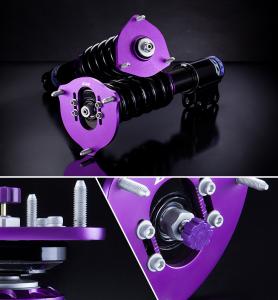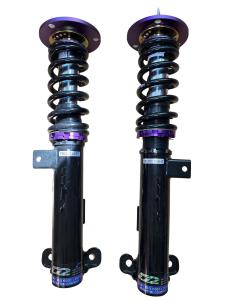How to Choose the Right Coilovers for Your Vehicle
How to Choose the Right Coilovers for Your Vehicle
Blog Article
Adding Coilovers on your car or truck may significantly boost the journey quality, managing, and functionality of one's vehicle. If you're looking to boost your operating experience, this guide will walk you through the measures to put in coilovers effectively while ensuring safety and functionality.
What Are Coilovers?
Coilovers are a variety of a coil spring and distress absorber, housed together as one component. They allow vehicle lovers to regulate the journey height, stiffness, and damping of the car, making them a popular modification for equally street and track use. Before beginning the installment, ensure you've plumped for the right coilovers tailored to your car or truck produce and model.

Instruments You'll Need
Before you begin, gather the mandatory resources to help make the method efficient and secure:
Jack and port stands
Torque wrench
Outlet set
Spring converters (if needed)
WD-40 or perhaps a rust penetrant
Rubber mallets and screwdrivers
Double-check your vehicle's requirements and confirm that you have every thing expected to complete the job.
Step-by-Step Manual to Adding Coilovers
1. Prepare Your Vehicle
Begin by parking your car or truck on a set, secure surface. Engage the parking brake and guarantee the port stands are safely set up to avoid accidents during installation. Raise the car employing a hydraulic port and take away the wheels at all four corners.
2. Eliminate the Old Suspension
Making use of your outlet collection, identify the screws keeping your current bumps, struts, and rises in place. Apply decay penetrant if screws appear difficult to loosen. Once the bolts are removed, you ought to be able to remove the suspension components carefully. Keep components organized in the event you require to appear right back for reference.
3. Deploy the Coilovers
Align the mounting details of the coilovers with the supports on your own car. Protected them in position utilising the products provided by the manufacturer. Ensure that you follow the torque specifications that include the directions; over-tightening or making bolts loose can bargain safety.
4. Regulate Height and Preload
Most coilovers offer adjustment rings to set trip top and preload. Using the provided instruments, arrange the controls to your preferred measurement, ensuring enough approval for driveability without compromising performance.
5. Check All Screws and Connections
Before finishing up, go over every secure and relationship to make sure they're secure. A loose secure during function could cause substantial issues on the road.
6. Reinstall Wheels and Check Get
When the coilovers are fitted, position the wheels straight back on and decrease the car. Take the vehicle for a quick check get to familiarize your self with the new setup. Hear for almost any strange sounds and recheck bolts after the drive.

Fine-Tuning for Optimum Efficiency
The beauty of coilovers is their adjustability. Following installation, spend some time fine-tuning the rigidity, damping, and experience top to suit your requirements, whether you prioritize track-level performance or a relaxed everyday drive.
Adding coilovers on your vehicle is a rewarding project that raises equally look and performance. With this particular manual, you can confidently undertake the method and enjoy superior handling on every drive. Recall, protection generally comes first, so invest some time, double-check every step, and don't hesitate to consult a specialist if needed. Happy driving!
Report this page